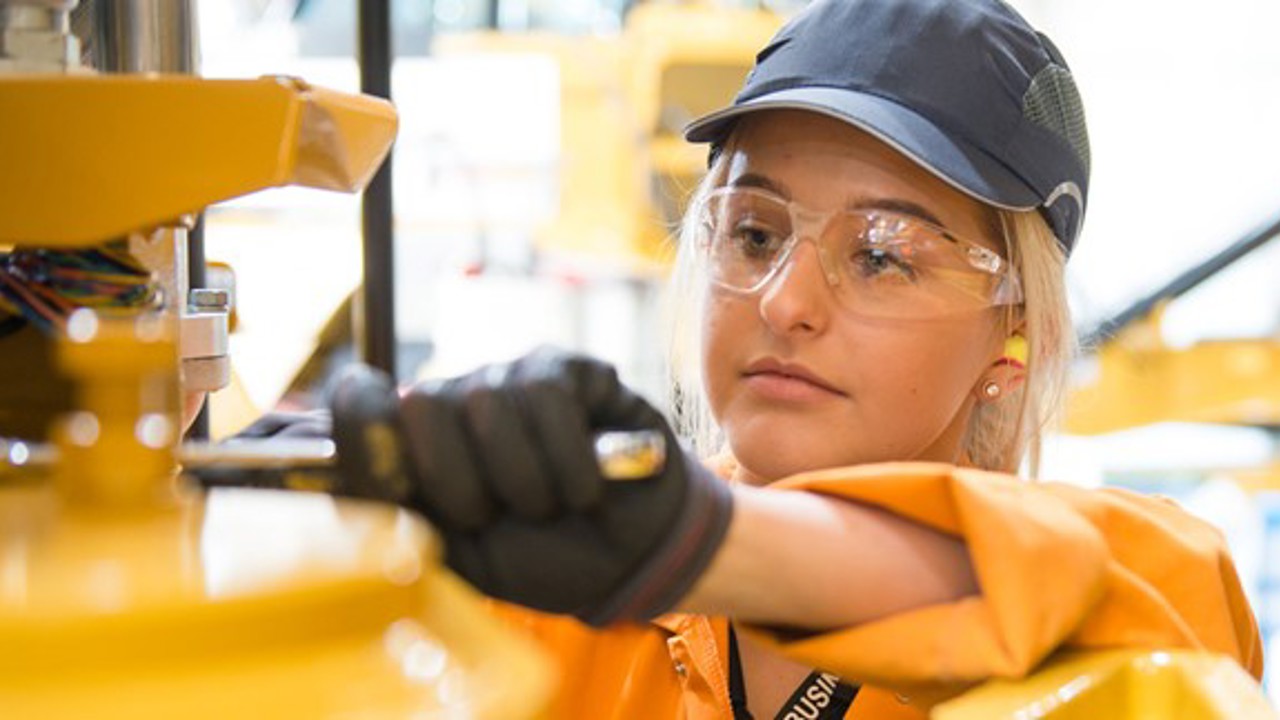Call to action to reverse small but worrying spike in women aged 35 to 44 leaving engineering
New workforce data released today by EngineeringUK reveals the proportion of women working in engineering and technology roles has declined in the past year from 16.5% to 15.7%. In contrast, women make up more than half of the rest of the UK workforce (56.1%).
Further analysis shows the drop is concentrated among women aged 35 to 44. The finding is consistent with registration data published by the Engineering Council which shows the average age of women leaving the profession is 43, in contrast to 60 for men.
Analysis of the wider UK workforce does not show a similar drop or pattern of women leaving other professions.
It is hoped the data, published by EngineeringUK as part of its annual review of the engineering workforce, will serve as a wake-up call to engineering and technology companies to improve recruitment and retention practice.
EngineeringUK Chief Executive Hilary Leevers, commented, “We are taking this small but significant decline very seriously. Behind the percentages, are professional women with real lives and careers. The sector as a whole needs to better understand why women are leaving and work harder to improve their retention, including creating opportunities for those who have left the profession to return. The various government skills taskforces must also ensure retention is core to the strategies they are working on.
She added, “Look, there are positives. In 2023 there were more women entering engineering and technology occupations in the 16 to 34 age groups. This indicates more women are entering the workforce straight from education and training. It’s important we drive forward on all fronts – inspiring and recruiting more young people into engineering and technology and then retaining their talent and experience too. Each and every business leader should take this opportunity to sense check their own recruitment and retention practices and see how they can be improved. I’d encourage employers to look at the good practice out there and to approach organisations like WISE, WES , Equal Engineers and the Royal Academy of Engineering who can all support women and businesses with inclusion and equity in the profession.”
EngineeringUK highlights current good inclusion practice amongst some firms and hopes others, regardless of size, follow their lead.
Diversity and Inclusion Lead at global engineering firm AtkinsRéalis, Rebecca Crowther, commented “In 2022 AtkinsRéalis published its ‘Career Deflection Report’ which brought national attention to some of the issues faced by women who are leaving the engineering profession at twice the rate of men. The findings of the report informed and led change within AtkinsRéalis – including the introduction of flexible bank holidays, enhanced parental leave and targeted training for women at all levels of the organisation – and prompted debate across a sector which must take responsibility and commit to change.”
Siemens also has a progressive recruitment policy to recruit and retain women and has pledged to see at least 30% of women in top management by the end of 2025. Carl Ennis, CEO of Siemens in the UK and Ireland, commented: “Having a diverse engineering sector ensures that we are better equipped to address the world's biggest problems. Major, complex challenges like sustainability requires a variety of minds, and lived experiences, contributing to solutions. It’s why improving gender balance, as one measure of diversity, is vital for the success of organisations across the board. It’s of course not a challenge that any business can resolve overnight but now more than ever, the sector needs to be accelerating efforts not resting on its laurels.”
More detail on the data:
- In 2022, women represented 16.5% of those working in engineering and technology roles dropping to 15.7% in 2023
- In 2022, there were 1,034,000 women working in engineering and technology occupations compared to 996,000 in 2023
- In 2023 there were more women in engineering and technology occupations between the ages of 16 to 34 – indicating that more women are entering the workforce straight from education, but are not being retained
- Compared to 2022, there were fewer women working in engineering and technology between the ages of 35 and 64 years
- Women make up 56.1% of the workforce of all other occupations but just 7% in the engineering and technology workforce
The decline of women in engineering and tech aged 35 to 64 is not seen in non-engineering and tech sectors, where retention levels have remained largely static.
We are taking this small but significant decline very seriously. Behind the percentages, are professional women with real lives and careers. The sector as a whole needs to better understand why women are leaving and work harder to improve their retention, including creating opportunities for those who have left the profession to return.
— Hilary Leevers, Chief Executive at EngineeringUK
Notes to editors
For media queries please contact our media team.
About EngineeringUK
EngineeringUK is a not-for-profit organisation that drives change so more young people choose engineering and technology careers. Our mission is to enable more young people from all backgrounds to be inspired, informed and progress into engineering and technology.
We work closely with our Corporate Members and in partnership with hundreds of organisations. We lead collaborative efforts to improve the impact of all engineering and tech inspiration and careers activities for young people through Tomorrow’s Engineers and managing The Tomorrow’s Engineers Code.
We ignite a passion for STEM among young people from all backgrounds through EUK Education and our school engagement programmes such as The Big Bang. Our careers resources help teachers bring STEM to life through real-world engineering and tech stories via Neon.
Our research and evidence build insight into the current workforce and our future needs. And our evaluations build understanding of what really works to inspire and inform the next generation. We also advocate for policy development in STEM and careers education and workforce planning for engineering and tech.












